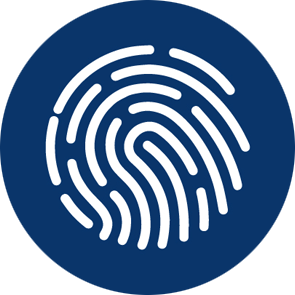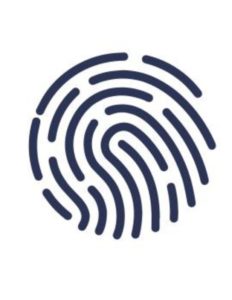Culture of Personalization
Culture of Personalization
School cultures are important. A Culture of Personalization bridges existing school culture with activities that make school personal for students. Administrators, teachers, and other adults in the school engage in a set of norms, activities, and behaviors that signal to students that the school is a place where each of them matters. It helps to build personal bonds that sustain the adults and the students in the school.
Cultures of Personalization are built on small gestures and conversations that individuals engage in as they go through the school day that communicate that people at the school matter. Here are a list of simple examples administrators, teachers, and adults in schools can utilize:
- Greeting students at the door
- Smiling, nodding, acknowledging students in the hallway
- Joking, chatting with students about topics of interest outside of academics
- Tailoring lessons or units around student interests or life experiences
- Establishing an attractive, safe environment, making sure the classroom/school is welcoming and clean
- Reflecting student interest and activities in spaces throughout the school
Schools benefit when they cultivate a personalized environment through deliberate choices about how to organize their routines and activities and emphasize the importance of communication and collegial support. Through these decisions, schools structure the very nature of the relationships between and among adults and students. Cultures of Personalization serve as the foundation for sense of belonging and connection to the school. They are built on caring and trusting relationships between educators and students, as well as between educators and between students. They are reinforced through communication, mutual respect, and shared interests. These activities and structures include:
- School visions and missions that promote strong and collaborative relationships
- Fair and equitable behavior management practices
- Open and supportive communication strategies and practices
- Ethics of caring
- Homerooms and advisories
- Mentoring programs
- Accessible guidance and college and career planning
- Strong extracurricular and athletic activities
What does the research say?
Abundant research supports the importance of positive school cultures. Studies have found that they shape students sense of connection to their school and educators longevity at a school (Loukas, Suzuki, & Horton, 2006; Borman & Dowling, 2008). School cultures shape students’ behavior and shape school safety. They also improve students’ developmental outcomes (Roeser, Eccles, & Sameroff, 2000). They can set clear expectations regarding bullying and the wellbeing of lesbian, gay, bisexual, transgender and queer students (Eccles & Roeser, 2011). Students who participate in extracurricular activities, such as sports and athletics, have higher academic achievement and greater engagement at their school (Guest & Schneider, 2003).
Cultures of Personalization require effort. They are built through a conscious effort on the part of adults. As Milbrey McLaughlin and colleagues wrote, “personal bonds with adults in the school have a greater capacity to motivate and engage than do traditional forms of social control that emphasize obedience to authority and conformity to rules.”
How can PASL schools create a Culture of Personalization?
PASL gives adults and students the platform to nourish and build meaningful relationships based off of communication, mutual respect, and shared interests. PASL provides the environment in which norms, values, and rituals can be created and grow from the classroom through the entire school building.
Norms, Values, & Rituals:
- Establishing norms, values, and rituals foster a sense of community with in the classroom and, ultimately, the school.
- Norms allow students to understand how they fit in a space and what they can contribute to it.
- Students know what to expect and understand the expectations of their teacher, administrators, and peers.
Strong relationships build trust between adults and students, adults and adults, and students and students, an essential component of effective schools (Farrington, Roderick, Allensworth, Nagaoka, Keyes, Johnson, & Beechum; Bryk & Schneirder, 2002).
The following tools are examples to help foster a culture of personalization:
Developing Grit: Angela Duckworth’s Ted Talk spurs a conversation about students empowering themselves to develop grit and become better students.
Quarterly awards: Boost student confidence and foster positive behavior by presenting awards to PASL students at the end of every quarter that have significantly improved or made an impact in some way.
Peer mentoring: Connecting students through peer mentoring can provide PASL students the opportunity to talk with older students about their beliefs, experiences, and attitudes towards school and help connect the PASL student further to school.
Team Song Learning Experience: Model each PASL component through the use of music as a vessel for interactive learning. This activity establishes a connecting between the instructor and participants and can be used not only with PASL students, but also faculty.
Have a suggestion for the PASL Toolkit? Add it here.
Additional research
Andrew Guest and Barbara Schneider, “Adolescents’ Extracurricular Participation in Context: The Mediating Effects of Schools, Communities, and Identity,” Sociology of Education (2003): 89–109.
Best, Ron. “Education, support and the development of the whole person.” British Journal of Guidance & Counselling 36, no. 4 (2008): 343-351. http://universityofhullscitts.org.uk/scitts/site/pt/downloads/pbl_pas_Best.pdf
Borman, Geoffrey D., and N. Maritza Dowling. “Teacher attrition and retention: A meta-analytic and narrative review of the research.” Review of educational research 78, no. 3 (2008): 367-409. https://journals.sagepub.com/doi/pdf/10.3102/0034654308321455
Bryk, Anthony, and Barbara Schneider. Trust in schools: A core resource for improvement. Russell Sage Foundation, 2002.; Tschannen-Moran, Megan. Trust matters: Leadership for successful schools. John Wiley & Sons, 2014. http://www.miteacher.org/uploads/1/0/3/4/10347810/trust_in_schools.pdf
Eccles, Jacquelynne S., and Robert W. Roeser. “Schools as developmental contexts during adolescence.” Journal of research on adolescence 21, no. 1 (2011): 225-241. https://onlinelibrary.wiley.com/doi/full/10.1111/j.1532-7795.2010.00725.x
Farrington, Camille A., Melissa Roderick, Elaine Allensworth, Jenny Nagaoka, Tasha Seneca Keyes, David W. Johnson, and Nicole O. Beechum. Teaching Adolescents to Become Learners: The Role of Noncognitive Factors in Shaping School Performance–A Critical Literature Review. Consortium on Chicago School Research. 1313 East 60th Street, Chicago, IL 60637, 2012. https://files.eric.ed.gov/fulltext/ED542543.pdf
Loukas, Alexandra, Rie Suzuki, and Karissa D. Horton. “Examining school connectedness as a mediator of school climate effects.” Journal of Research on Adolescence 16, no. 3 (2006): 491-502. https://onlinelibrary.wiley.com/doi/full/10.1111/j.1532-7795.2006.00504.x
Milbrey W. McLaughlin et al., “Constructing a Personalized School Environment,” Phi Delta Kappan 72, no. 3 (1990): 230–235.
Roeser, Robert W., Jacquelynne S. Eccles, and Arnold J. Sameroff. “School as a context of early adolescents’ academic and social-emotional development: A summary of research findings.” The elementary school journal 100, no. 5 (2000): 443-471. https://www.jstor.org/stable/pdf/1002279.pdf





